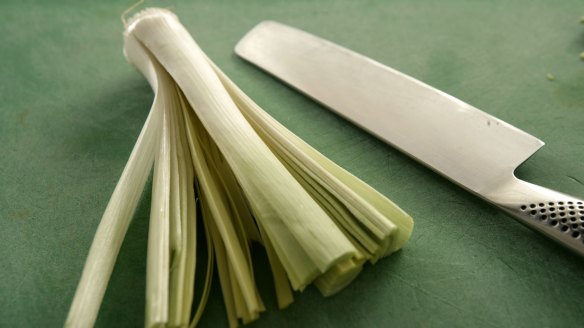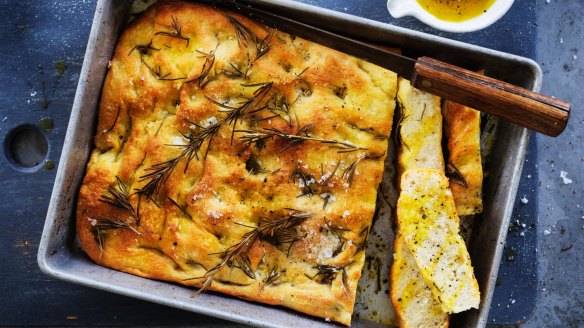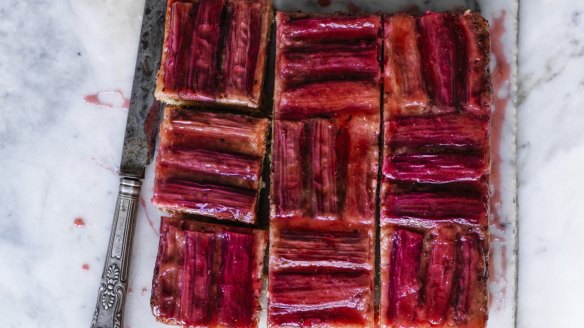The best way to remove grit from leeks

What's the best way to clean a leek? G. Houghton
Leeks are grit magnets, second only to spinach. Fine grains of sand get trapped between the layers of leaves and work their way down the stem.
The way I deal with this is to cut off the coarse tips of the green leaves then slice the leek twice lengthways, from the start of the white to the end of the green (leaving the root end intact to hold everything together).
Rinse under running water, fanning out the layers to wash away the grit. Flick dry then trim off the bulbous roots.

My friend pronounces the Italian flatbread fahck-ah-see-ya. B. Saunders
It sounds like a Steve Vizard sketch from the 1990s. I don't think it's a big problem. I heard a woman order a tab-ooh-lay salad, and the waiter got the gist.
Perhaps subtly take her to meet some Italian nonnas to get the pronunciation direct from the source. Mind you, that pronunciation will change depending on which region they come from.
As an aside, focaccia comes from the Latin panis focacius or "hearth bread".
Panis focacius was basically damper leavened with the natural yeasts in dough saved from the day before and cooked on the stone hearth.

I have been given rhubarb by a neighbour. What should I do? L. Howson
Thank them. Remove the leaves and compost them. They make excellent compost but not such a good meal. The leaves contain a high concentration of oxalic acid, which will give you kidney stones if you eat enough of them. So don't.
The stems are also sour and can be eaten raw but are better cooked.Remove the leaves and the hard base of the stem. Older rhubarb may need the fibrous outer layer of skin peeled off too.
- Cook 300g of prepared rhubarb in a heavy-based saucepan over medium heat with 50g sugar and the juice of an orange for 8-10 minutes or until just soft (take care: it goes from firm to mush very quickly).
- Remove from heat, cool and serve with yoghurt or porridge.
- Or trim the stems, lay them on a baking tray covered in baking paper, sprinkle with a little brown sugar and bake at 180C for 20 minutes or until soft.
It can be chopped into chunks and added to Middle Eastern lamb dishes, where its sourness cuts through the richness of the meat.
Why are the ceramic containers used for salt called pigs? M. Bride
In old Scots, crockery and dishes were referred to as "piggery". The word most likely came to the Scots from the old French word pichier, meaning vessel.
A pig was any earthenware vessel, so a whusky pig was a whisky jug and a pigger was a dish merchant. We still use the word pitcher today. In old Scots, the animal we call a pig was known as a gussie or a grice.
Send your culinary conundrums and ingredient suggestions to brainfood@richardcornish.com.au or Twitter and Insta @foodcornish.
Appears in these collections
- More:
- Food
- Brain food
